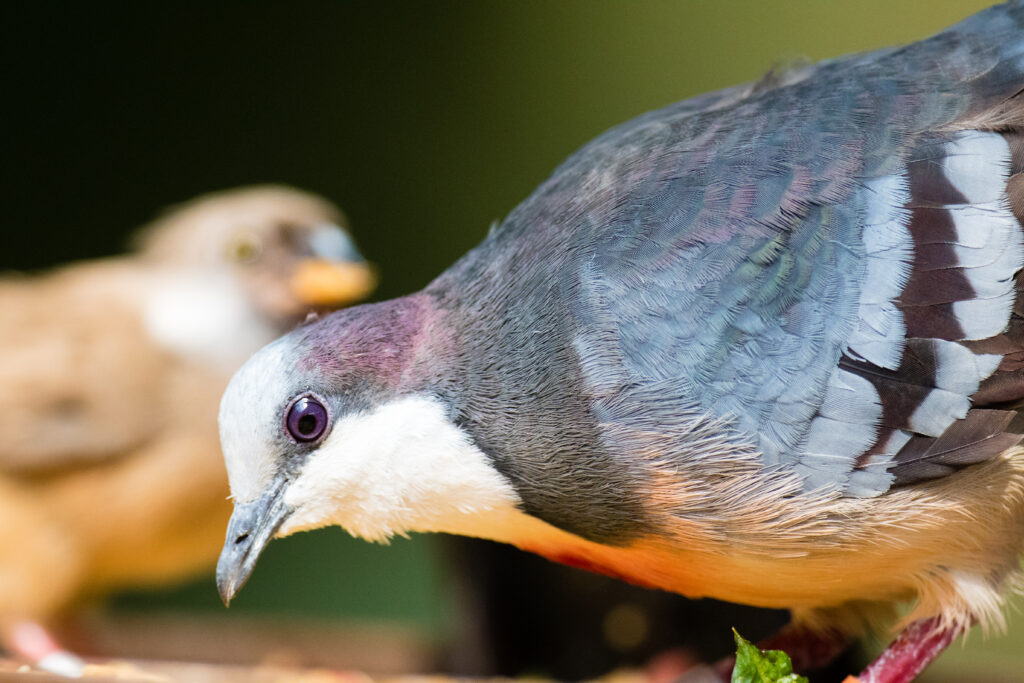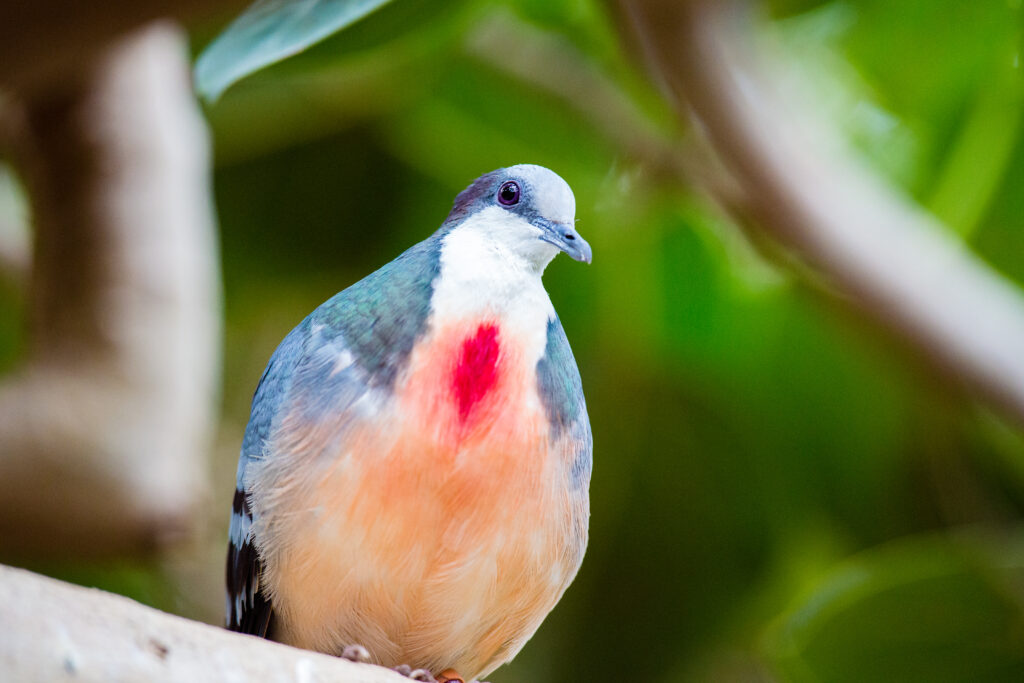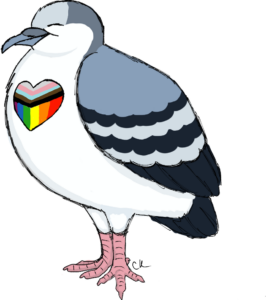Walking through the Tropics building, there’s a lot to take in. You might observe a fruit bat flying overhead, or a silver moony splashing in the water. And you might see a bird that looks like it’s been shot.
But don’t panic! That’s just the Luzon bleeding-heart dove.
“They’re kind of a standard-sized pigeon of what you would expect. Obviously, named after the bright red patch of feathers on their chest that looks like blood. It’s not,” said Carter Kleoppel, a zookeeper at the Tropics. “We often get questions from guests who see them. ‘Is that bird injured?’ No, it’s not; it’s supposed to look like that. That’s just a display structure that they have. Both males and females have it.”
These are one of seven bleeding-heart doves species, which can be found on various islands of the Philippines. Luzon bleeding-heart doves are endemic to Luzon, the largest and most populous island in the Philippines.
“They live generally on the ground floor of the rainforest. They’re sifting through the leaf litter looking for seeds and fallen fruits and insects,” Kleoppel said. “When you’re out in The Tropics, a good place to look is on the ground. They’ll usually be shuffling around looking for stuff.”
In the wild, Luzon bleeding-heart doves will mate in mid-May. Since there’s plentiful food and nice weather year-round at the Tropics, the birds don’t have a distinct mating season.

They tend to build nests at a mid-tree level, which helps them stay protected from predators. In the Tropics, this translates to their feeding trays, which are about eye level.
“They’ll try to nest on our food pans, which is a little annoying, but they collect pieces of leaves and twigs and make just kind of a big mound upon which normally they would lay the egg,” said Kleoppel.
At the Tropics we currently have two Luzon bleeding-heart doves nesting together. But don’t get your hopes up for any eggs to soon hatch. The two bleeding-heart doves in the Tropics are both males.
It’s not uncommon for two animals of the same sex to nest together.
In his 1999 book “Biological Exuberance: Animal Homosexuality and Natural Diversity,” biologist Bruce Bagemihl examines homosexual and bisexual behavior in animals.
“Homosexual behavior occurs in more than 450 different kinds of animals worldwide, and is found in every major geographic region and every major animal group,” Bagemihl wrote.
The Sedgwick County Zoo is no stranger to same-sex bird couples.
“It does happen. We have same sex bonded pairs of macaws,” said Anne Heitman, curator of birds. “We’ve had same sex flamingo pairs in the past. These pairings occurred while the birds were housed in mixed-sex flocks and only lasted for one breeding season.”
While we tend to understand animal behavior by comparing it to our own experiences, it’s important to remember that they aren’t people and they experience partnership different from how we do.

“In this specific instance, it seems to be there are no females around so they seek each other’s company just so that they have another bird to interact with and to display to,” said Kleoppel.
In the past, the Sedgwick County Zoo has had male pairings of Luzon bleeding-heart doves that were consistent over multiple seasons. But the two current birds have not nested together before.
Regardless of the two birds’ motivations for keeping one another’s company, they’ve been embraced at the Sedgwick County Zoo as an icon of the season.
In honor of Pride Month, Kleoppel was asked to do an illustration for the Zoo. The final result- a bleeding-heart dove with a heart-shaped Pride flag on its chest instead of the typical red plumage.

Kleoppel was inspired by the bleeding-heart dove for many reasons. The “heart” being in its name and being a distinguishing feature, as well as the stories of previous same sex pairings from these birds were both factors.
“And honestly, I just like bleeding-heart doves. They make a good subject. They’re very round and pleasing to look at,” said Kleoppel. “And it’s highlighting an animal that not a lot of people come to the zoo specifically to see. I always like to highlight some of our lesser-known animals.”
It makes sense for a bird to be the icon of Pride Month. Carter said that more than 130 different species of bird have been noted as having same sex pairings.
In his novel, Bagemihl notes that birds were the first observed species to exhibit “animal homosexuality.” French naturalist and count Georges-Louis Leclerc de Buffon first recorded such behavior in birds in the mid-1700s.
Luzon bleeding-heart doves are considered near threatened, with their biggest threat being habitat loss.
“I encourage people to read more about them,” said Kleoppel. “Learn about tropical birds because they’re a very interesting subject.”
The Sedgwick County Zoo is proud to be a safe and welcoming place for everyone in our community to be their genuine selves.
Our mission includes inspiring respect, and that extends to people as well as the wildlife and wild places we’re dedicated to conserving.